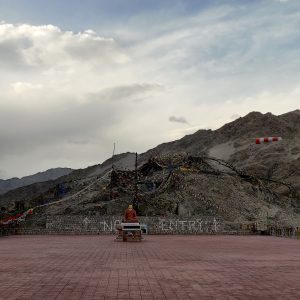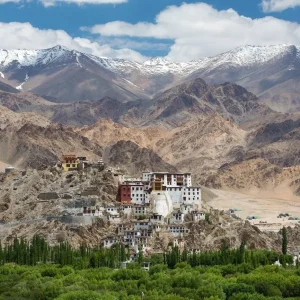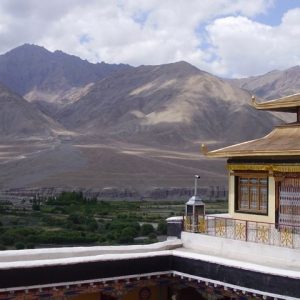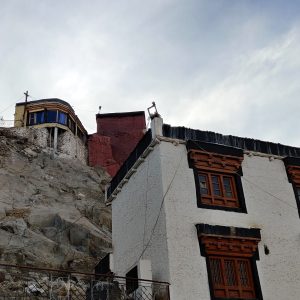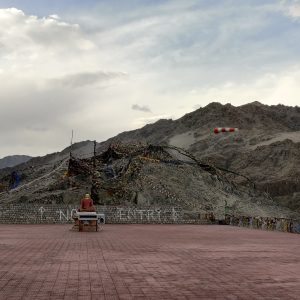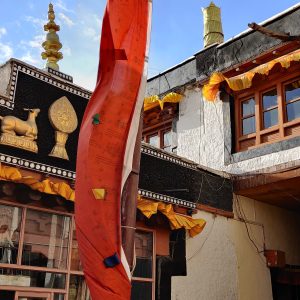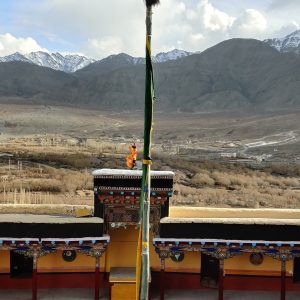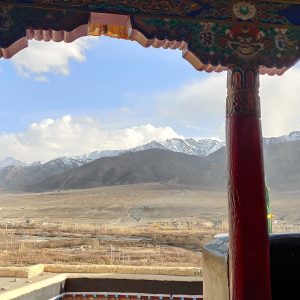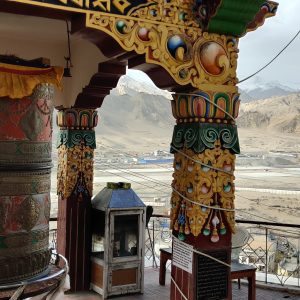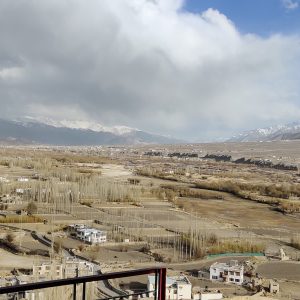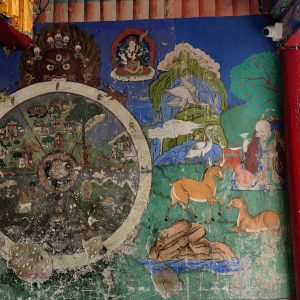The presence of marine fossils at Upshi Ridge is evidence of the time when this high-altitude region was submerged under the Tethys Sea, millions of years ago, before the uplift of the Himalayas. Fossils of ammonites, mollusks, and other marine creatures have been found here, dating back to the Mesozoic era. While the site has no human historical structures, its significance lies in its contribution to understanding the tectonic history and evolution of the Indian subcontinent.
Architectural Features and Layout
Upshi Fossil Ridge, located near the village of Upshi in Ladakh, is a geological marvel rather than a man-made structure. The ridge is composed of layered sedimentary rocks that date back millions of years, preserving marine fossils from the time when this region was part of the ancient Tethys Sea. The natural formation of the ridge—with its tilted rock beds, strata lines, and embedded fossils—creates a layout that resembles an open-air geological museum, rich in texture and historical layering.
Main Assembly Area (Fossil Zones and Trail Sections)
Fossil Deposits: Certain zones along the ridge have a high density of visible fossils, including ammonites, gastropods, and other marine life forms. These areas are often visited by researchers and curious travelers alike.
Trekking Pathways: Trails leading to and along the ridge are unmarked but accessible, winding through arid slopes and offering insights into the region’s ancient past.
Observation Points: Elevated spots on the ridge serve as natural platforms to observe the fossil patterns and the sweeping terrain of the Indus Valley.
Cultural Significance
While not spiritually revered like monasteries, Upshi Fossil Ridge holds immense scientific and cultural value. It tells the story of Ladakh’s prehistoric marine origins, offering a tangible connection to Earth’s evolutionary history. Local lore sometimes associates these fossil shapes with “divine imprints” or “stone spirits”, blending science with traditional belief. Educational and cultural awareness visits are sometimes conducted here to promote geological heritage.
Fort-like Structure
The ridge itself stands like a natural stone wall, with jagged edges and sharply rising formations that resemble battlements of a ruined fortress. Its elevation above the valley and the surrounding erosion-formed channels give it an appearance of being both ancient and defensible, adding to its visual drama and sense of mystery.
Roof and Viewpoints
From the higher sections of the Fossil Ridge, one gets a breathtaking panoramic view of the Indus River basin, Upshi village, and the converging Himalayan ranges. The layered rocks also provide excellent foregrounds for landscape photography. These points are especially magical during early morning or golden hour, when the shadows and sunlight reveal the fine textures of the fossil-laden terrain.



